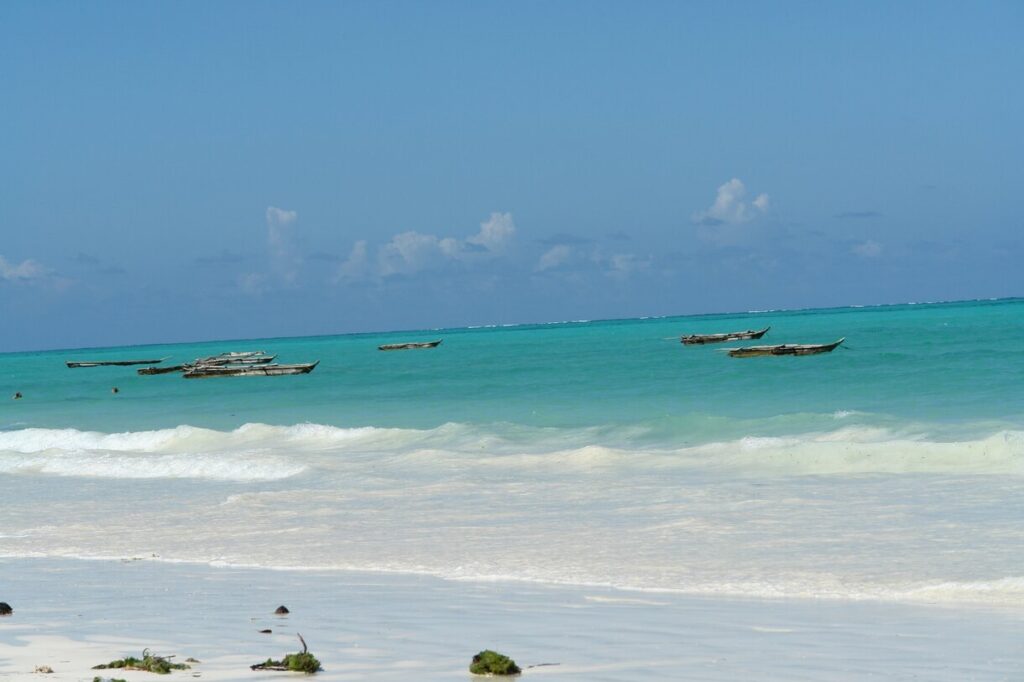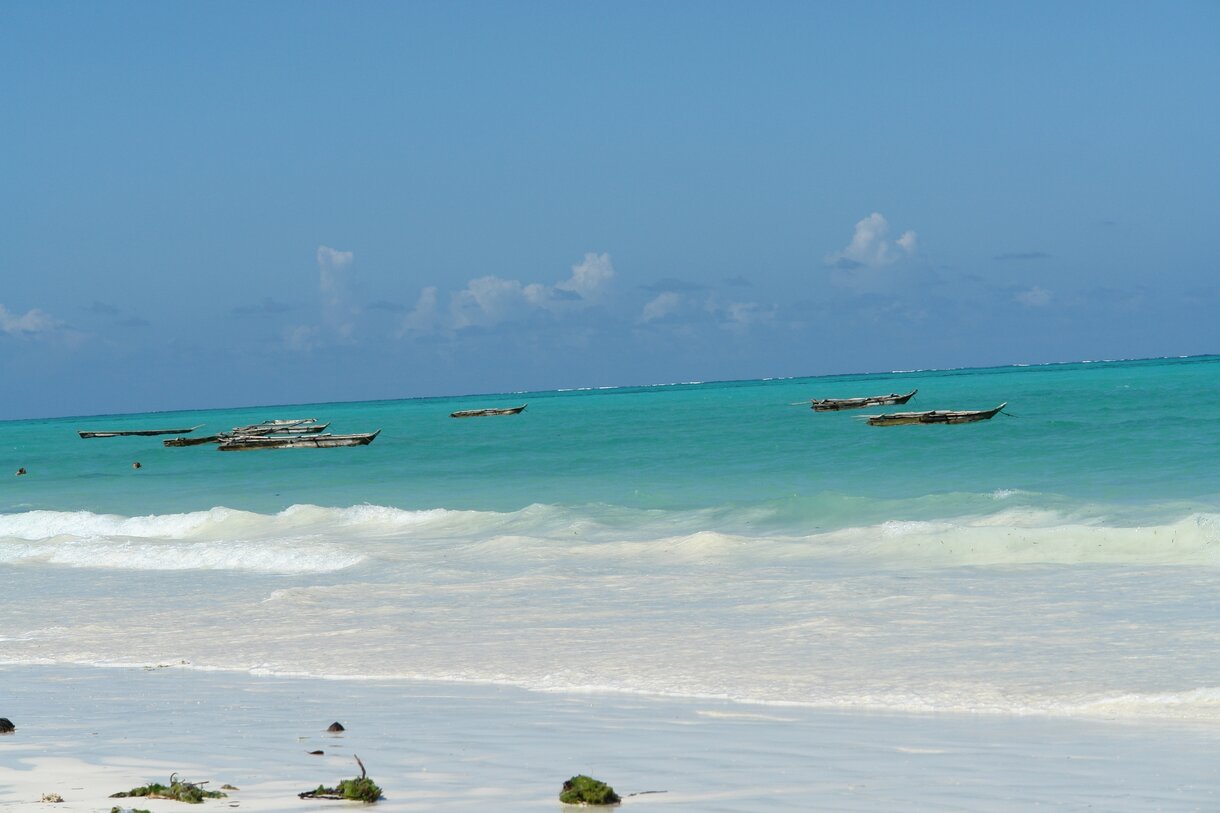ZANZIBAR – THE SPICE ISLAND PARADISE
After conquering Kilimanjaro, we deserved some relaxation. The next morning, bags in hand, we headed to the airport hoping for an earlier flight to Zanzibar. To our surprise, we changed our tickets without extra fees! Just one hour later, we landed on this legendary island that for centuries was the center of spice trade – and unfortunately, the slave trade.
Historical trivia: The name “Zanzibar” comes from Arabic “Zanjibar” meaning “Coast of Blacks.” In the 19th century, the island was a major clove trading center, and cloves remain its symbol today.

First Impressions: Paje
From the airport, a $35 taxi brought us to Kitete in Paje – one of the most popular tourist spots on the east coast. After brief negotiations, we found a cozy room for $20/night, just 2 minutes from the beach. First impression? True paradise – white sands, coconut palms, and crystal-clear Indian Ocean waters.
Dinner meant fresh seafood for just 7,000-8,000 TSH ($3-4). While restaurant prices aren’t the lowest, the quality and flavors justify every penny.
Swimming with Dolphins: Worth It?
For $30, I tried the popular dolphin swim. Unfortunately, it proved disappointing. For 1.5 hours, our small boat tossed on waves searching for these intelligent mammals. When we found them, sightings were fleeting – mostly tails briefly surfacing. Only twice did I see dolphins up close.
Eco fact: Zanzibar’s bottlenose dolphins are protected. However, excessive tourism can disrupt their natural behaviors, so choose responsible tour operators.

Paradise Relaxation
Our days melted into blissful laziness – swimming in warm waters, strolling endless beaches, and watching breathtaking sunsets. Every meal was a feast – from grilled fish to exotic fruits and local specialties like urojo (coconut soup) or pilau (spiced rice with meat).
Culinary trivia: Called the “Spice Island,” Zanzibar grows not just cloves but cinnamon, nutmeg, pepper, and vanilla. Don’t miss a spice farm tour!
Stone Town – Living History Museum
Before returning to Kenya, we visited UNESCO-listed Stone Town – Zanzibar’s historic heart with a difficult past. Until the late 1700s, this was East Africa’s main slave trade hub. Today, an Anglican cathedral stands on the former slave market site, memorializing this dark history.
Wandering Stone Town’s narrow alleys feels like time travel. Look for the intricately carved doors – over 500 unique artworks adorn the city, blending Arabic, Indian, and European influences from the 19th century.
Pop culture fact: Stone Town was the birthplace of Farrokh Bulsara – better known as Queen’s legendary frontman Freddie Mercury.

Farewell to Africa
Our last African day included Nairobi souvenir shopping. Zanzibar proved the perfect post-Kilimanjaro retreat – where paradise beaches, rich history, and incredible cuisine create unforgettable memories.
Final thoughts: Zanzibar offers far more than beautiful beaches. Here, African, Arab, and European influences intertwine into a unique culture. While some tourist activities may disappoint (like our dolphin experience), simply being on this magical island stays with you forever.

Leave a Reply